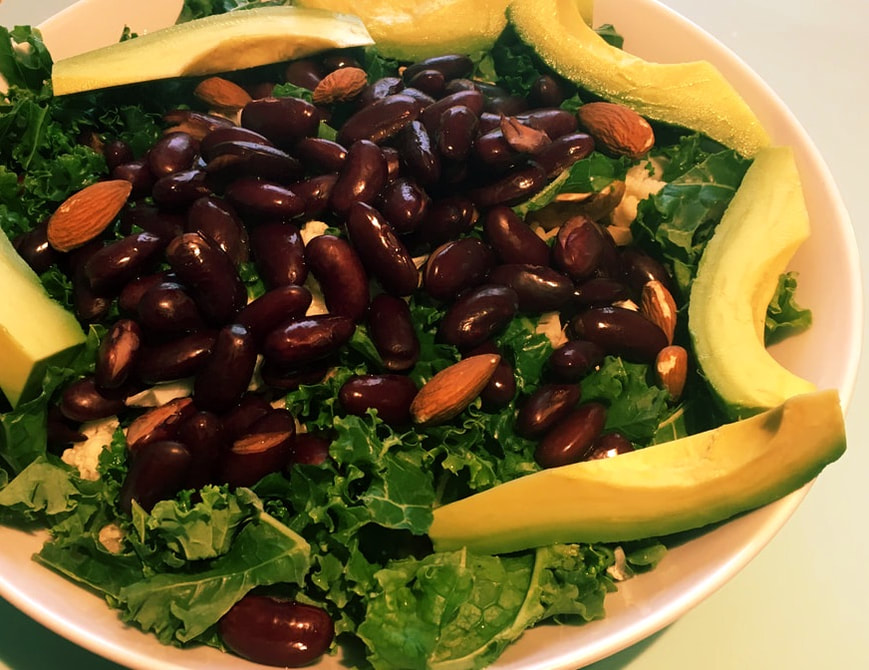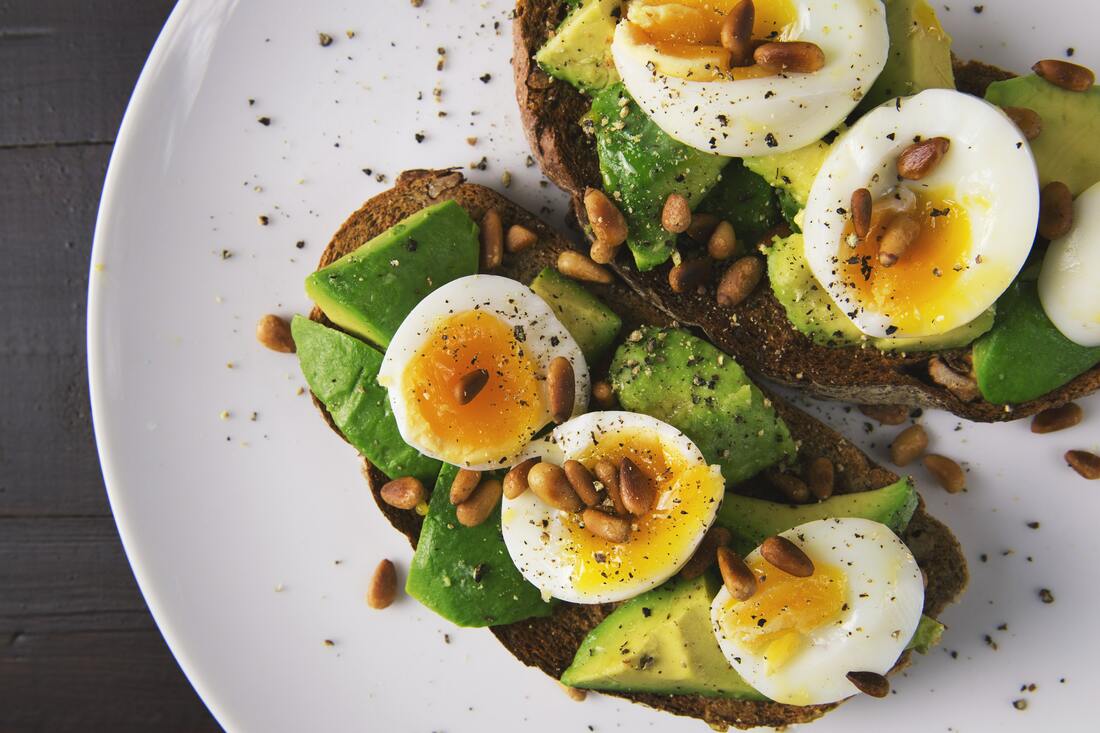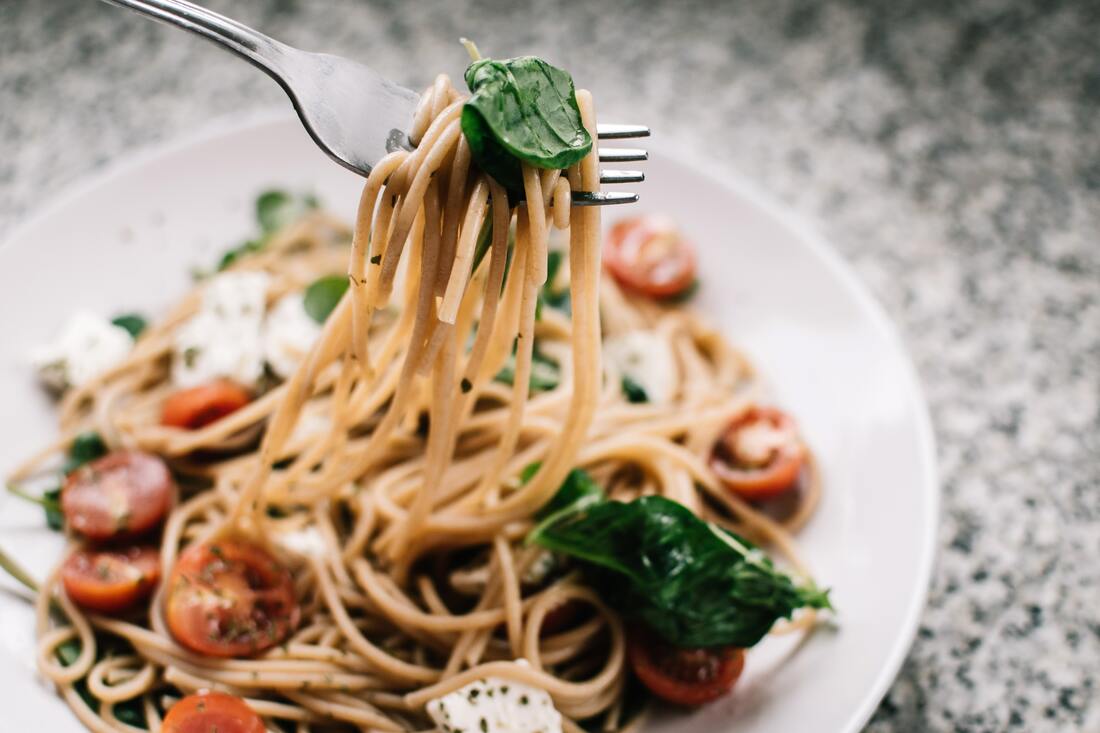 Prior to our sessions, Kahina's diet was limited to 13 food items and the same three meals every day. We worked on increasing the variety of meals she could have at home and when eating out. This is one of her new favourites: wholegrain rice salad with red kidney beans, almonds, avocado, cauliflower, and kale. The habits and attitudes I developed while working with Nikias helped me not only reach the goals we set at our first meeting, but also improve my relationship with food as a whole. I was going to write an article about what a nutrition and weight management advisor does. Then I thought, who better than a real client to explain that?
Kahina and I worked together for eight weeks. She was worried about her diet, which consisted of the same three meals every day, and she felt restricted to a dozen food items in total. For this reason, she was supplementing with a multivitamin to make up for possible nutrient deficiencies. For the duration of our work together, I asked her to stop taking the supplement. By the end of our sessions, she decided she didn’t need it anymore. Thanks to the changes we made to her lifestyle, she feels healthier, more energetic, and confident that she can get all the nutrients she needs from her food. She also kindly accepted to answer some questions for my readers. So, if you’re wondering what a nutrition and weight management advisor can do for you, read on!
3 Comments
The only secret to food combination is a balance of protein, carbs and fat – they all play a key role in our health. Most of us have a general idea of what protein, carbs, and fat are (and if you don’t, you should click on the links at the top!). The tricky part is the concept of a balanced meal.
In today’s article, I aim to answer these questions: what does a balanced meal look like? Where do you start when you have to make one? Is there an easy way to do it, or is the art of balanced meals the privilege of those who have enough time to prepare gourmet recipes and enough money to buy organic food? The history of modern nutritionism has been a history of macronutrients at war: protein against carbs; carbs against proteins, and then fats; fats against carbs. Useful Links: Part 1 | Part 3
What Are Carbs? No, the answer isn’t, “the enemy”. Carbohydrates are the main supply of readily available energy for our bodies. In particular, our brain can’t function without them. They come in two forms: sugary carbs and starchy carbs. You’ve got to see what you put into your body, not just care about the outside of your body. What is Protein?
Along with carbohydrates and fat, protein is one of the three macronutrients we need to obtain from our diet. “Macro” means big, indicating that protein, carbs, and fat are present in the food we consume in higher quantities than micronutrients like vitamins and minerals. We also need higher amounts of macro- than micronutrients for optimal health. Resting for me is fitness training. We all want to crush it in the gym, but we tend to think our gains depend only on our training and nutrition. However, there are other variables that can go a long way towards improving performance and progress, reducing training fatigue and delayed onset muscle soreness (DOMS). In this article, I’ll cover various recovery strategies I use or recommend based on their cost, ease of implementation, and scientifically assessed and self-reported efficacy.
|
Nikias TomasielloWelcome to my blog. I’m an online fitness coach with a passion for bodybuilding, fantasy, and bread. Want to work with me? Check out my services!Archives
May 2024
Tags
All
|
Follow me on social media |
Get in touch |
© 2018-2023 Veronica Tomasiello, known as Nikias Tomasiello – All rights reserved





 RSS Feed
RSS Feed